Neurotrope Announces Publication of Positive Human Cell Culture and Mouse Model Data of Bryostatin 1
– Preclinical data demonstrates reduction of Alzheimer’s brain deficits to lower toxic Aβ and restored synaptic loss –
Plantation, FL. – May 28, 2014 – Neurotrope, Inc. (OTCQB: NTRP) announced today the publication of positive human cell culture and mouse model data of Bryostatin 1 in two peer reviewed journals: PLOS One and the Journal of Pharmacology and Experimental Therapeutics. Neurotrope’s lead drug candidate, Bryostatin 1, a potent activator of the PKCepsilon enzyme that will be entering clinical trials for the treatment of Alzheimer’s Disease (AD), has now also been shown in human cell cultures to address deficits of two critical proteins that occur in AD brains. Deficits of the enzyme neprilysin (NEP) prevent degradation of the toxic Aβ oligomer proteins that can cause synaptic loss, neurodegeneration, and dementia. Deficits of the protein HuD in early AD can also cause the loss of synapses and synaptic maturation. A second study demonstrates in a mouse model that Bryostatin 1 inhibits a key enzyme in the phosphorylation of tau protein, a hallmark of AD.
Bryostatin 1 corrects the deficits of NEP by activating HuD that is also deficient in AD. In turn, Bryostatin 1 lowers the level of toxic Aβ oligomers, pathologic hallmarks of AD, via the HuD-NEP pathway. Bryostatin, via HuD activation also increases synaptogenic proteins such as BDNF, GAP43, insulin-like growth factors, and NGF (nerve growth factor). Thus, a single therapeutic agent can lower the synaptotoxic Aβ oligomers and restore lost synapses by increasing synaptogenic factors. These effects are described in two new publications, noted below, corroborating the potential therapeutic benefits Bryostatin 1 may have in the treatment of AD and other neurodegenerative disorders such as Fragile X Syndrome.
In the first study, “PKCepsilon promotes HuD-mediated neprilysin mRNA stability and enhances neprilysin-induced Aβ degradation in brain neurons,” published in PLOS One, Drs. Chol Seung Lim and Daniel L. Alkon, the Company’s Chief Scientific Officer, report treatment of human neuronal cell cultures with Byrostatin 1 enhanced NEP association with HuD and increased NEP activity, leading to degradation of Aβ and increased cell viability. Thus, PKCepsilon activation may have therapeutic efficacy for AD by reducing neurotoxic Aβ accumulation as well as having direct anti-apoptotic and synaptogenic effects since activating HuD coordinates downstream synaptogenic growth factors.
In a second study, “Bryostatin 1 restores hippocampal synapses and spatial learning and memory in adult fragile X mice,” authored by Drs. Miao-Kun Sun, Jarin Hongpaisan, Chol Seung Lim, and Daniel L. Alkon and published in the Journal of Pharmacology and Experimental Therapeutics, the authors demonstrate in a mouse model of Fragile X syndrome, a major cause of mental retardation and Autism Spectrum Disorder, the ability of Bryostatin 1 to inhibit GSK-3β, a key enzyme in the phosphorylation of tau proteins. Phosphorylated tau is the main component of the neurofibrillary tangles and is also hallmark of AD. In addition to demonstrating effects on GSK-3β, the authors demonstrate normalization of other Fragile X abnormalities, including hippocampal brain-derived neurotrophic factor (BDNF), maturation of synapses, and spatial learning and memory.
Dr. Alkon stated “These studies provide evidence of a new mechanism by which Bryostatin 1 decreases Aβ, and restores lost synapses. The Fragile X report also provides the first direct evidence of Bryostatin’s ability to inhibit hyperphosphorylation of tau protein that leads to neurofibrillary tangles. These new findings add to previous data that support Bryostatin’s effects of synaptic protection and enhanced cognition in AD transgenic mouse models. Collectively, these latest findings increase the likelihood that PKCepsilon activation will provide disease-modifying as well as symptomatic benefits in AD and other neurodegenerative disorders. We will continue our research at BRNI to provide Neurotrope with data and insights to support the path towards a therapeutic treatment for patients with AD.”
Link to the article referenced in the first study mentioned above is: http://dx.plos.org/10.1371/journal.pone.0097756.
Link to the article referenced above in the second study mentioned above is: http://www.ncbi.nlm.nih.gov/pubmed/24659806.
Further details on these articles will soon be posted to the Company’s website.
About Neurotrope
Neurotrope was formed in October 2012 to develop and market two product platforms: a drug candidate called bryostatin for the treatment of Alzheimer’s Disease, and; a minimally invasive biomarker analysis system for the diagnosis of this disease. A Phase 2a study with bryostatin in the treatment of Alzheimer’s Disease is scheduled to commence in June 2014. Both of these programs are being progressed in collaboration with BRNI, which has licensed this technology to Neurotrope. The Company is also leveraging several other of BRNI’s proprietary research advances towards the near-term initiation of new clinical studies looking at other high value central nervous system targets that present neurodegeneration as a core part of their pathology. Both the preclinical and clinical efforts of Neurotrope are focused on the development of conventional small molecules that are extraordinarily potent in the activation of the enzyme PKCepsilon, which has been shown to play a central role in orchestrating the expression of a number of neurotrophic proteins that aid the process of neuroregeneration. More technical information on this promising approach to treat a variety of neurodegenerative diseases can be found on the Company’s website.
Please visit www.neurotropebioscience.com for further information.
Forward-Looking Statements
Any statements contained in this press release that do not describe historical facts may constitute forward-looking statements. Forward-looking statements may include, without limitation, statements regarding (i) the plans and objectives of management for future operations, including plans or objectives relating to the development of commercially viable pharmaceuticals, (ii) a projection of income (including income/loss), earnings (including earnings/loss) per share, capital expenditures, dividends, capital structure or other financial items, (iii) the Company’s future financial performance and (iv) the assumptions underlying or relating to any statement described in points (i), (ii) or (iii) above. Such forward-looking statements are not meant to predict or guarantee actual results, performance, events or circumstances and may not be realized because they are based upon the Company’s current projections, plans, objectives, beliefs, expectations, estimates and assumptions and are subject to a number of risks and uncertainties and other influences, many of which the Company has no control over. Actual results and the timing of certain events and circumstances may differ materially from those described by the forward-looking statements as a result of these risks and uncertainties. Factors that may influence or contribute to the inaccuracy of the forward-looking statements or cause actual results to differ materially from expected or desired results may include, without limitation, the Company’s inability to obtain adequate financing, the significant length of time associated with drug development and related insufficient cash flows and resulting illiquidity, the Company’s inability to expand the Company’s business, significant government regulation of pharmaceuticals and the healthcare industry, lack of product diversification, volatility in the price of the Company’s raw materials, existing or increased competition, results of arbitration and litigation, stock volatility and illiquidity, and the Company’s failure to implement the Company’s business plans or strategies. These and other factors are identified and described in more detail in the Company’s filings with the SEC, including the Company’s Annual Report on Form 10-K for the fiscal year ended December 31, 2013 and Quarterly Report on Form 10-Q for the fiscal quarter ended March 31, 2014. The Company does not undertake to update these forward-looking statements.
For additional information, please contact:
Robert Weinstein
Chief Financial Officer
(914) 295-2765
rweinstein@neurotropebioscience.com
www.neurotropebioscience.com
Dr. Daniel Alkon
Scientific Director, BRNI
(301) 312-1444








